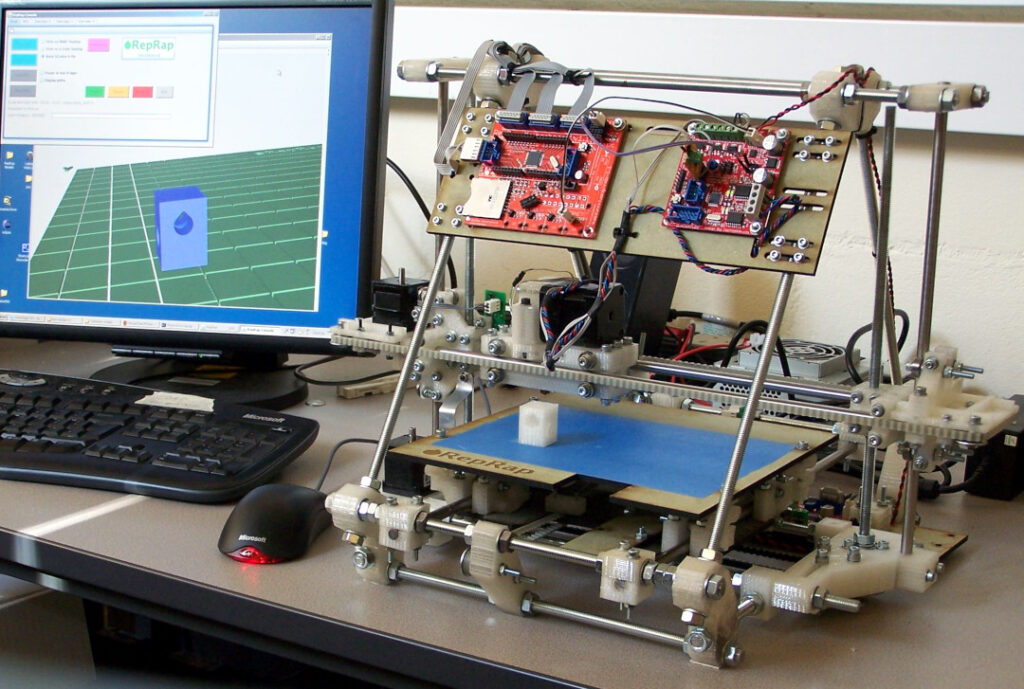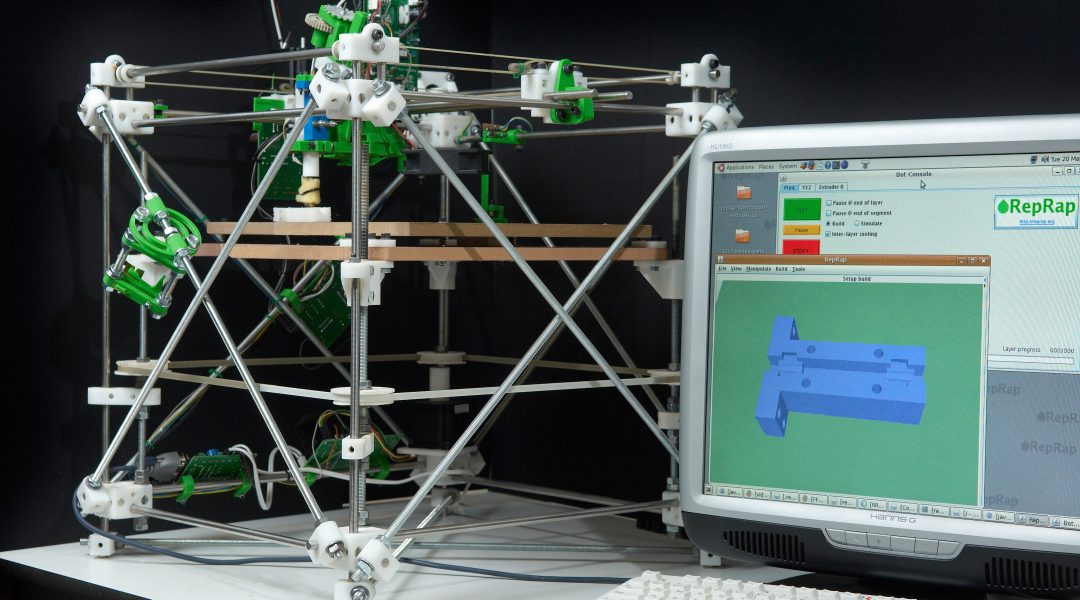The history of 3D printing is a captivating tale of innovation and technological progress. It’s a story that begins in the 1980s and has since unfolded into a myriad of advancements across multiple industries. In this blog post, we will take you on a journey through the history of 3D printing, from its humble beginnings to the cutting-edge developments of today.

The Birth of 3D Printing
The roots of 3D printing trace back to the 1980s when the first steps were taken in developing various printing methods. First confined to research laboratories and universities until 1983, when Chuck Hull (in the picture above) pioneered a process known as “stereolithography.” This groundbreaking technology marked a significant turning point for the industry. Stereolithography involves the use of UV lasers to solidify layers of liquid resin, allowing for the creation of 3D objects with remarkable precision.
Hull’s invention opened up a world of possibilities, and his company, 3D Systems, became one of the early industry leaders. Stereolithography quickly became a cornerstone of the 3D printing world, leading the way for the many techniques and technologies we have today.
Although initially the adoption of 3D printing was slow, it gradually found its way into many industrial processes. However, it wasn’t until the arrival of the RepRap project that the definitive breakthrough for this technology occurred.
Timeline
- 1980s – Birth of 3D Printing: Various printing methods are developed, laying the foundation for 3D printing.
- 1983 – Chuck Hull’s Stereolithography: Chuck Hull invents stereolithography, a pivotal technology for 3D printing.
- 1990s – Commercialization of 3D Printing: 3D printing together with CAD software finds first major applications on the market.
- 2004 – RepRap Project: The RepRap project is initiated, aiming to create affordable 3D printers capable of self-replication.
- 2010s – Advancements in Medical Applications: 3D printing is used for custom prosthetics, dental implants, and even human organs.
- 2010s – Multi-Color and High-Definition Printing: 3D printing evolves to offer multi-color and high-definition printing for diverse applications.
- 2013 – Bioprinting: Significant progress in bioprinting, offering hope for regenerative medicine.
- 2013 – Metal Printing: Metal 3D printing expands possibilities in industries like aerospace and automotive.
- 2020s – Industry Dominance and Competitors: Established firms like 3D Systems and Stratasys continue to shape the industry, while new competitors emerge (like Printim 😉 ).
The RepRap Project and the democratization of 3D printing
As with other technologies we had to wait almost 20 years until the next big breakthrough. In 2004, the 3D printing landscape changed forever with the inception of the RepRap project. The project’s primary objective was to create an affordable 3D printer capable of reproducing its own components. This ingenious concept garnered the attention of enthusiasts and innovators, resulting in a thriving community of volunteers.

The RepRap project led to the development of successful modifications and the birth of companies like MakerBot or Prusa Research. Founded by Josef Průša, who was a core developer of the RepRap project, Prusa Research is nowadays a company that values open-source collaboration and community involvement while continues to make significant contributions to the 3D printing industry. They are dedicated to producing high-quality 3D printers, and they’re constantly innovating based on valuable feedback from their customers and community.
New applications and materials
With the advent of mainstream 3D printing become a standard in prototyping and design. Throughout the 2010s, new applications and materials entered the market. Among the novelties that arrived during this decade, we can highlight the following:
- Medical Applications: One of the most significant breakthroughs has been in the realm of medical applications. 3D printing has enabled the creation of custom prosthetics, dental implants, and recently, even organs. This innovation has brought about a profound impact on the healthcare industry, improving the lives of countless individuals.
- Multi-Color and High-Definition Printing: 3D printing has evolved to offer multi-color and high-definition printing, allowing for more detailed and aesthetically pleasing creations. This development has expanded the scope of 3D printing to encompass art, design, and architecture.
- Bioprinting and Metal Printing: The history of 3D printing also includes groundbreaking advancements in bioprinting and metal printing. Bioprinting holds the promise of revolutionizing the medical field by enabling the printing of living tissues and organs. Metal printing, on the other hand, has opened up new possibilities in aerospace, automotive, and engineering industries.
Today many of these applications are commonplace in the industry but back then not even visionaries like Chuck Hull saw it coming. In a 2014 interview with CNN when Hull was asked what had surprised him most about the developments in 3D printing he commented:
“To me, some of the medical applications. I didn’t anticipate that, and as soon as I started working with some of the medical imaging people, it became pretty clear that this was going to work. But, you know, they told me, I didn’t tell them”.
Chuck Hull
Industry Dominance and emerging competitors
The 3D printing landscape has witnessed the rise of industry giants like 3D Systems and Stratasys, who have played pivotal roles in shaping the industry. Their technologies have been used in aerospace, automotive, and healthcare, among others. However, the field is not limited to these established players; it continues to see the emergence of new, innovative companies, like ours, seeking to make their mark.
Conclusion
In conclusion, the history of 3D printing technologies is a testament to human ingenuity and perseverance. The pioneering work of individuals like Chuck Hull, who introduced stereolithography, and the RepRap project have played a significant role in democratizing this technology, making it more accessible and affordable for all. As we look to the future, the promise of 3D printing continues to evolve, offering endless possibilities in medicine, manufacturing, art, and beyond.



